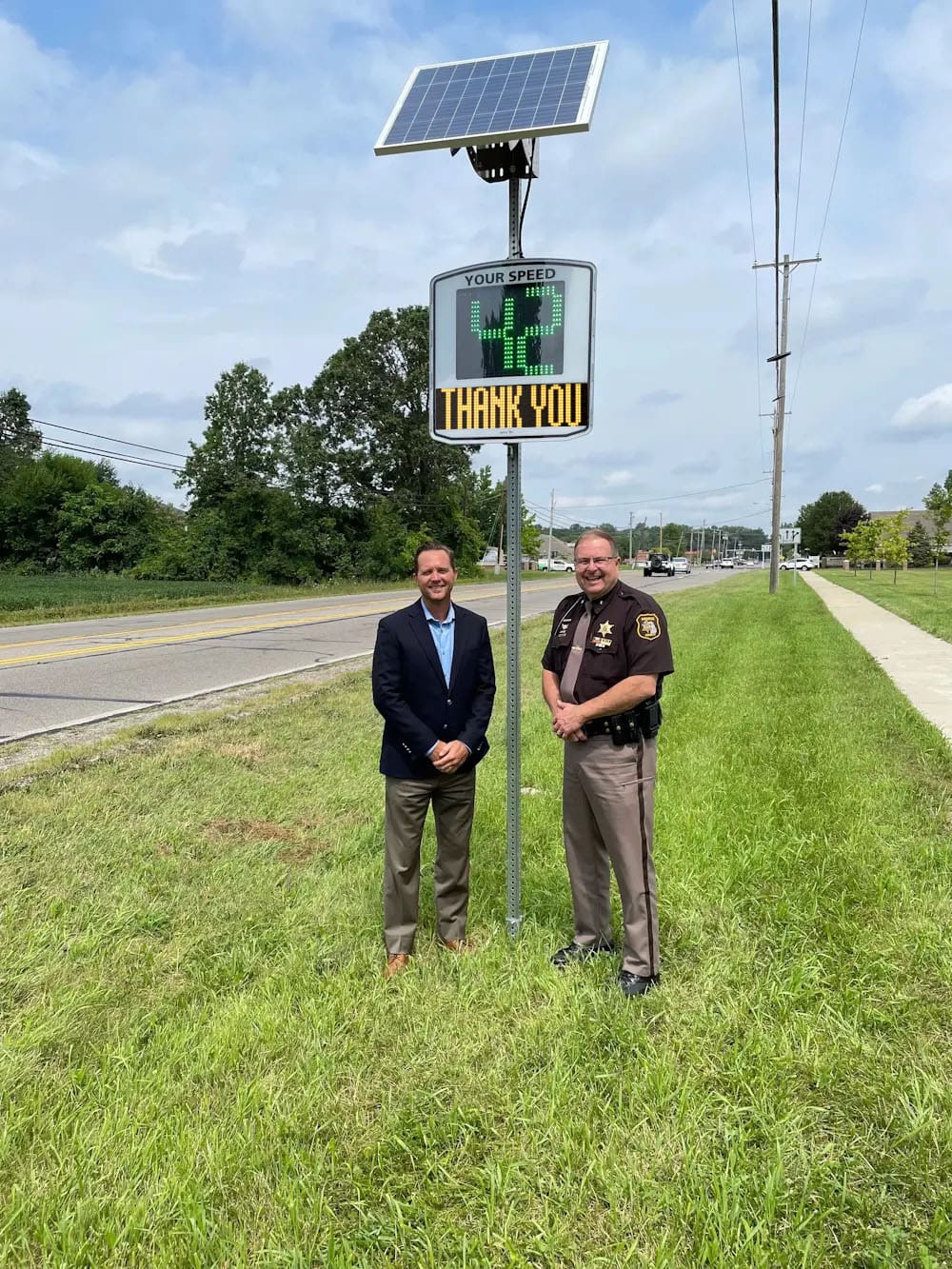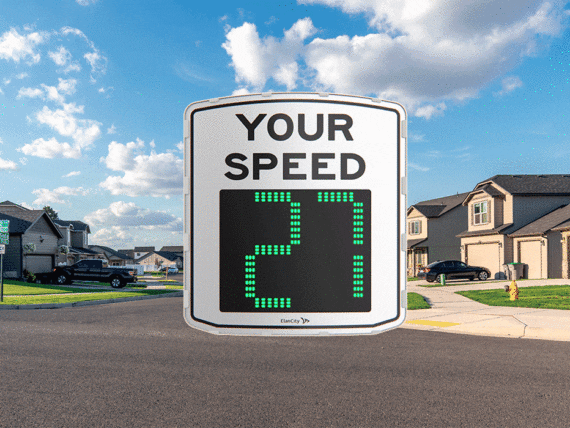Law Enforcement
How Radar Speed Signs can help the Police reduce speeding?
Speeding is a major issue in U.S. cities, particularly in residential neighborhoods with a “force of habit” effect caused by people driving on familiar daily routes.
Despite the police employing various methods to resolve the issue, the question remains: What more can be done by protectors of the community to reduce speeding and ensure safety for its citizens?
Speed awareness radars can have a great impact on speeding, as drivers are more likely to slow down when made aware of their excess speeding.
Our Evolis Radar Speed Sign is a proven method that reduces the current driving speed by 25% on average. Discover why our radars have already been adopted by over 10,000 communities worldwide!
An essential tool for Law Enforcement: The Traffic Count Feature
Modern radar speed signs, like those from ElanCity, offer a powerful feature for law enforcement—traffic counts. This feature collects valuable data on vehicle flow, average speeds, and peak traffic times. By identifying the scale of speeding issues on a given road, police departments can implement more targeted law enforcement measures. Additionally, moving the radar speed sign to different locations allows the police to compare traffic data between areas and assess the radar’s direct impact on driver behavior. With this data-driven approach, radar speed signs become more than a deterrent—they serve as an essential tool for effective law enforcement and improved road safety.
Discover our range of products
Our best-selling model worldwide due to its versatility. Choose the solar-powered version for greater autonomy.
Our portable version of the radar speed sign. With EVOLIS Mobility, you can monitor and secure multiple accident-prone roads. A smaller footprint with a lower price!
Our giant version of the speed awareness radar is designed for major traffic arteries. It allows drivers to see their speed even from greater distances!
Feedback from customers
Frequently Asked Questions from Police Departments to Our Sales Team
How do I collect data with my radar speed sign and what data is collected?
Data is gathered by the radar speed sign through USB, Bluetooth, or 3G/4G connections, with the ability to transfer the data to a computer for analysis.
Your radar speed display logs average and maximum speeds, as well as vehicle counts for traffic in both directions. This makes it possible to assess the behavior of drivers both approaching the sign and moving away from it.
Are there any additional fees besides the radar? Is the app included?
There are no additional fees with the purchase of your radar speed sign and no special technician is needed. Our speed indicator devices are designed for easy installation by the police department itself, at no extra charge.
As for the dedicated smartphone app, it is included for free – offering easy ways to view the data and manage your speed radar sign remotely!
How do I install my radar speed sign?
Installing your radar speed sign doesn’t require any technical expertise. The tech team at Elan City will guide you on how to work the product into your existing setups.
What is the best location to install my radar speed display?
Ideal placement of speed cameras: Set up your speed camera in areas considered high-risk due to the high number of car accidents and speeding complaints from local residents or businesses.
Guidelines for safe and recommended installation:
- Mount the radar on the right side of the road, facing incoming traffic. Be sure to align it to be as perpendicular as possible to the direction of the road.
Install the radar speed sign at a height of at least 7 feet to keep pedestrian pathways clear.
Key metrics for installation:
- For optimal results, install the radar on a straight stretch of road that is at least 700 feet long to ensure visibility by drivers well in advance. The radar’s Doppler antenna can detect incoming vehicles from as far as 1000 feet away.
- The speed display refreshes every 1.1 seconds, ensuring virtually real-time feedback for drivers.
What are the power sources? Which one should I choose?
Our data shows that 80% of local authorities who have installed a radar speed sign prefer the solar option for its convenience and energy efficiency.
Power source options:
Solar Connection: The radar speed sign is self-sufficient, with two batteries and a 95-watt solar panel ensuring year-round power.
Electric: The radar speed display can be powered by a steady electric current or connected to the public lighting network, with a minimum requirement of five hours of charging per night.
Hybrid Power: This option employs both solar and electric sources of power. It defaults to electric power if solar energy is insufficient due to a lack of sunlight – or conversely, to solar power if the source of electricity proves unstable.
Batteries: Equipped with two batteries and an external charger, the system offers between 7 to 10 days of operational autonomy.

















